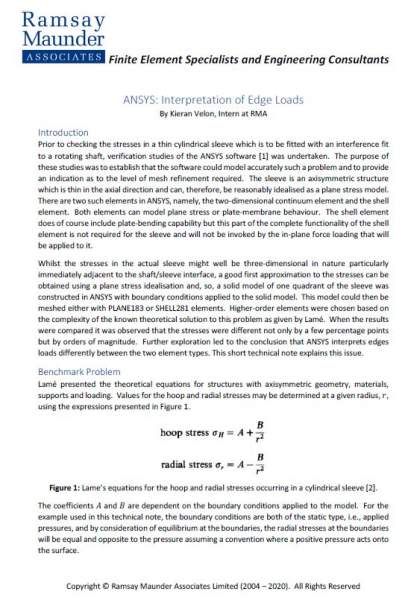ANSYS: Interpretation of Edge Loads
Introduction
Prior to checking the stresses in a thin cylindrical sleeve which is to be fitted with an interference fit to a rotating shaft, verification studies of the ANSYS software [1] was undertaken. The purpose of these studies was to establish that the software could model accurately such a problem and to provide an indication as to the level of mesh refinement required. The sleeve is an axisymmetric structure which is thin in the axial direction and can, therefore, be reasonably idealised as a plane stress model. There are two such elements in ANSYS, namely, the two-dimensional continuum element and the shell element. Both elements can model plane stress or plate-membrane behaviour. The shell element does of course include plate-bending capability but this part of the complete functionality of the shell element is not required for the sleeve and will not be invoked by the in-plane force loading that will be applied to it.
Whilst the stresses in the actual sleeve might well be three-dimensional in nature particularly immediately adjacent to the shaft/sleeve interface, a good first approximation to the stresses can be obtained using a plane stress idealisation and, so, a solid model of one quadrant of the sleeve was constructed in ANSYS with boundary conditions applied to the solid model. This model could then be meshed either with PLANE183 or SHELL281 elements. Higher-order elements were chosen based on the complexity of the known theoretical solution to this problem as given by Lamé. When the results were compared it was observed that the stresses were different not only by a few percentage points but by orders of magnitude. Further exploration led to the conclusion that ANSYS interprets edges loads differently between the two element types. This short technical note explains this issue.
Author
Kieran Velon

